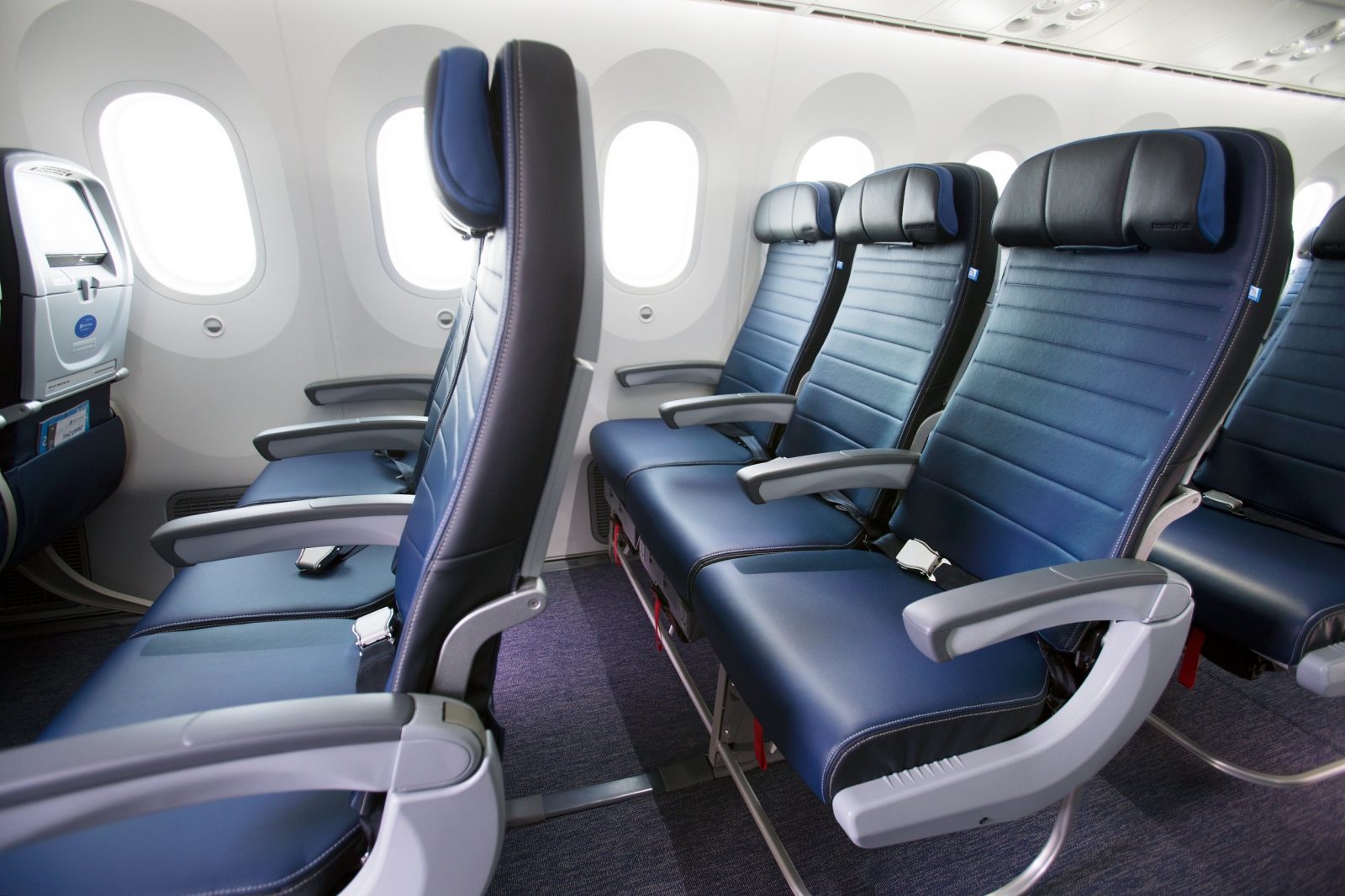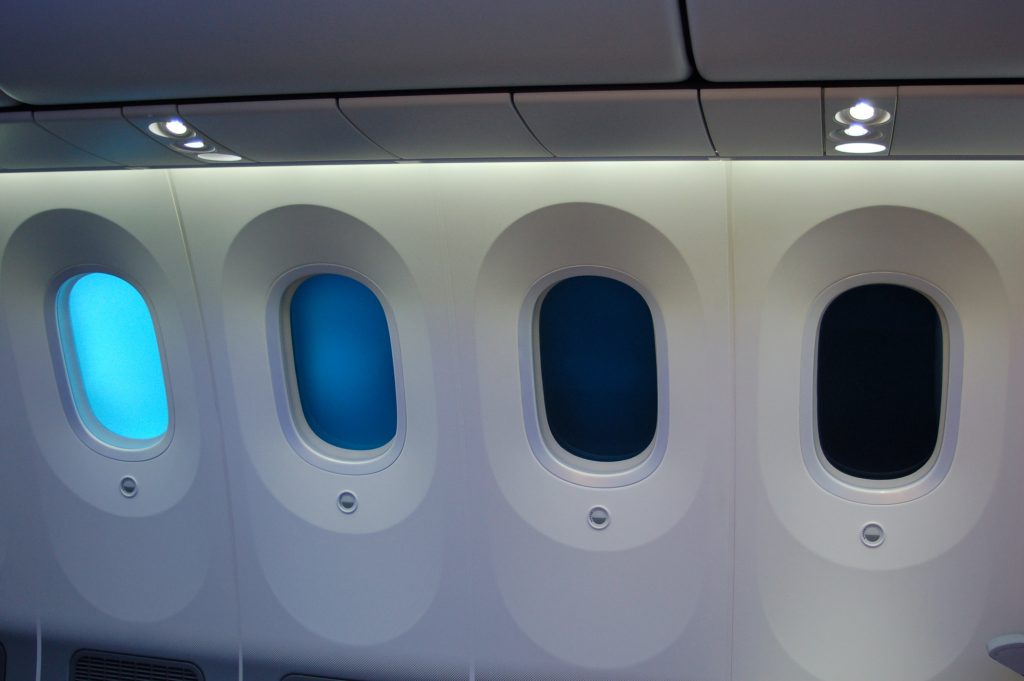
The electric window shades found on all Boeing 787 Dreamliners have a way of really polarizing opinion. Some people (like me) love them, while many passengers get really frustrated with the technology for several reasons.
Some of the frustrations felt by passengers with the 787 window shades are borne out of the fact that the technology probably could have done with being further developed before it was rolled out so widely – the fact that even at their darkest setting, light permeates through is a major annoyance.

But a lot of the frustration comes from the fact that flight attendants wield so much power in being able to take full control of the shades.
The shades were developed by Gentex using electrochromic technology that sends an electric current through a special transparent gel that’s sandwiched between two panels within the window.
By increasing the voltage running through the gel, the window quickly transitions from fully transparent to dark.
The idea is that passengers can control the darkness of their individual window shade simply by pressing a button. The window shades have five darkness settings ranging from 1, which is fully transparent, to 5, which is the darkest setting.
One of the biggest annoyances with these dark settings is that in bright daylight, and especially during sunrise, the technology doesn’t fully block out the light as a traditional pull-down window shade does.
The second frustration is that the dimming process is quite slow, and it’s not always immediately clear whether the window is dimming as requested.
But what really winds passengers up is how flight attendants can set a darkness setting of their choosing for the entire cabin and then lock that setting in place, overriding individual controls.
This is actually a really great feature for flight attendants as it allows them to ensure that the window shades are fully transparent for takeoff and landing. This is required by law in many countries, and the United States remains an outlier in not requiring window shades to be up or set to transparent for critical phases of flight.
Problems arise, however, when flight attendants take control away from passengers during non-critical phases of flight. Fat chance of cloud gazing at 38,000 feet when the window shade has been locked to setting five!
There are occasionally some good reasons for flight attendants to do this, like during overnight flights when you don’t want the entire cabin disrupted as the sun rises.
And while flight attendants at many airlines have been instructed not to lock the window shades, the practice still takes place with amazing regularity.
If you do find yourself in this situation, it might not be best to get into an argument about internal airline policies over who has control of the window shade setting, but you might find offering a compromise to be more successful in regaining some control over your window shade.
As well as being able to set and lock the window shade setting, flight attendants also have the ability to set a range for passengers to choose from. For example, flight attendants could allow you to control your shade between settings five to three, giving you the opportunity to see outside without spilling too much light into the cabin.
The range can be set for an entire cabin or an individual shade.
In the ideal world, of course, you should have full control over your window shade, but requesting a range of settings might be a good solution to one of the biggest frustrations that passengers have with the 787 window shades.
Related
Mateusz Maszczynski honed his skills as an international flight attendant at the most prominent airline in the Middle East and has been flying ever since... most recently for a well known European airline. Matt is passionate about the aviation industry and has become an expert in passenger experience and human-centric stories. Always keeping an ear close to the ground, Matt's industry insights, analysis and news coverage is frequently relied upon by some of the biggest names in journalism.







